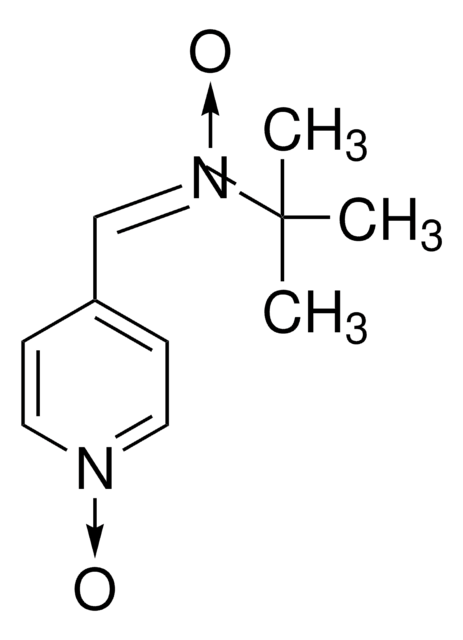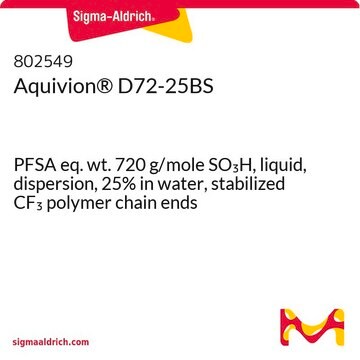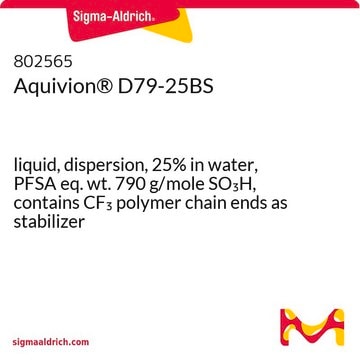All Photos(1)
About This Item
Empirical Formula (Hill Notation):
C8H15NO
CAS Number:
Molecular Weight:
141.21
MDL number:
UNSPSC Code:
12352100
PubChem Substance ID:
NACRES:
NA.22
Recommended Products
Assay
95%
form
solid
bp
73 °C/1 mmHg (lit.)
mp
58-61 °C (lit.)
storage temp.
−20°C
SMILES string
CC1(C)CC(C)(C)[N+]([O-])=C1
InChI
1S/C8H15NO/c1-7(2)5-8(3,4)9(10)6-7/h6H,5H2,1-4H3
InChI key
GUQARRULARNYQZ-UHFFFAOYSA-N
General description
The ESR spectrum of 3,3,5,5-tetramethyl-1-pyrroline N-oxide was studied.
Application
3,3,5,5-Tetramethyl-1-pyrroline N-oxide was used as a spin traping reagent.
Storage Class Code
11 - Combustible Solids
WGK
WGK 3
Flash Point(F)
Not applicable
Flash Point(C)
Not applicable
Personal Protective Equipment
dust mask type N95 (US), Eyeshields, Gloves
Choose from one of the most recent versions:
Certificates of Analysis (COA)
Lot/Batch Number
Don't see the Right Version?
If you require a particular version, you can look up a specific certificate by the Lot or Batch number.
Already Own This Product?
Find documentation for the products that you have recently purchased in the Document Library.
G M Rosen et al.
Journal of medicinal chemistry, 31(2), 428-432 (1988-02-01)
Two nitrones, 3,3-diethyl-5,5-dimethylpyrroline 1-oxide (DEDMPO) and 3,3,5,5-tetramethylpyrroline 1-oxide (M4PO), were synthesized by the zinc/ammonium chloride reduction of appropiately substituted gamma-nitrocarbonyl compounds, followed by addition of methylmagnesium bromide to the resulting intermediate nitrones. The lipophilicities of these nitrones were estimated by
T Ozawa et al.
Free radical biology & medicine, 20(6), 837-841 (1996-01-01)
The reactivities of the chlorine dioxide (ClO2), which is a stable free radical towards some water-soluble spin-traps were investigated in aqueous solutions by an electron spin resonance (ESR) spectroscopy. The ClO2 radical was generated from the redox reaction of Ti3+
S Unchern et al.
Neurochemical research, 23(1), 97-102 (1998-03-03)
We compared neurotoxicity of piperine and low K+ on cultured cerebellar granule neurons. As considered from lactate dehydrogenase release and 3-(4,5-dimethylthiazol-2-yl)-2,5 diphenyl tetrazolium bromide reduction, both piperine and shifting from high K+ (25 mM) to low K+ (5.4 mM) were
M J Davies et al.
The Biochemical journal, 240(3), 789-795 (1986-12-15)
Spin trapping using 5,5-dimethyl-1-pyrroline N-oxide (DMPO) has been used to detect and distinguish between the carbon-centred, alkoxyl, and peroxyl radicals produced during the photolytic decomposition of hydroperoxides. Photolysis of tert-butyl and cumene hydroperoxides, and peroxidized fatty acids, in toluene, with
Shing-Jong Huang et al.
Solid state nuclear magnetic resonance, 29(4), 272-277 (2005-11-09)
We show that a Gaussian-shaped pulse can be used to excite selected 1H signals in hydroxyapatite, monetite and H-Y zeolite loaded with trimethylphosphine oxide (TMPO). This selective excitation method can be incorporated into Lee-Goldburg (LG) cross-polarization to obtain useful spectral
Our team of scientists has experience in all areas of research including Life Science, Material Science, Chemical Synthesis, Chromatography, Analytical and many others.
Contact Technical Service








